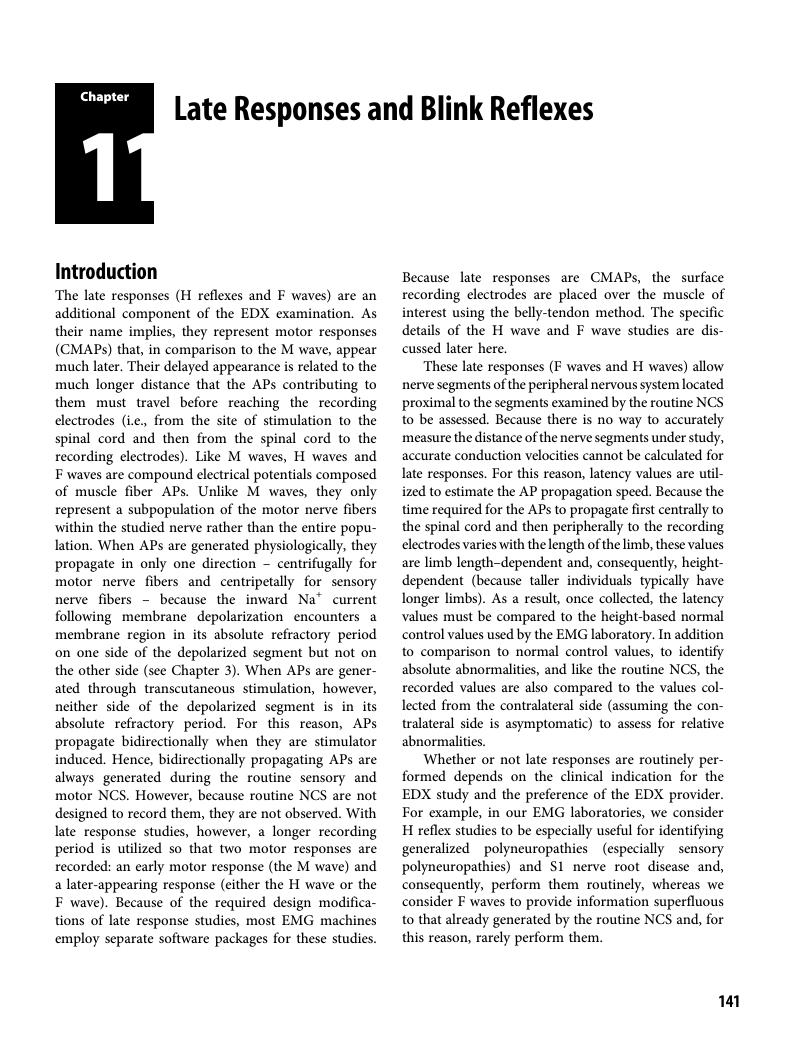Book contents
- Comprehensive Electromyography
- Comprehensive Electromyography
- Copyright page
- Dedication
- Contents
- Preface
- Acknowledgments
- Section 1 Introductory Chapters
- Section 2 Nerve Conduction Studies
- Chapter 6 Electrodes and Nerve Conduction Study Basics
- Chapter 7 Motor Nerve Conduction Studies
- Chapter 8 Sensory Nerve Conduction Studies
- Chapter 9 The NCS Manifestations of Various Pathologies
- Chapter 10 The Utility of NCS for Lesion Localization and Characterization
- Chapter 11 Late Responses and Blink Reflexes
- Chapter 12 Repetitive Nerve Stimulation Studies and Their Pathological Manifestations
- Section 3 The Needle EMG Examination
- Section 4 Other Pertinent EDX Information
- Section 5 Case Studies in Electrodiagnostic Medicine
- Section 6 Appendices
- Index
- References
Chapter 11 - Late Responses and Blink Reflexes
from Section 2 - Nerve Conduction Studies
Published online by Cambridge University Press: 08 May 2018
- Comprehensive Electromyography
- Comprehensive Electromyography
- Copyright page
- Dedication
- Contents
- Preface
- Acknowledgments
- Section 1 Introductory Chapters
- Section 2 Nerve Conduction Studies
- Chapter 6 Electrodes and Nerve Conduction Study Basics
- Chapter 7 Motor Nerve Conduction Studies
- Chapter 8 Sensory Nerve Conduction Studies
- Chapter 9 The NCS Manifestations of Various Pathologies
- Chapter 10 The Utility of NCS for Lesion Localization and Characterization
- Chapter 11 Late Responses and Blink Reflexes
- Chapter 12 Repetitive Nerve Stimulation Studies and Their Pathological Manifestations
- Section 3 The Needle EMG Examination
- Section 4 Other Pertinent EDX Information
- Section 5 Case Studies in Electrodiagnostic Medicine
- Section 6 Appendices
- Index
- References
Summary

- Type
- Chapter
- Information
- Comprehensive ElectromyographyWith Clinical Correlations and Case Studies, pp. 141 - 151Publisher: Cambridge University PressPrint publication year: 2018
References
- 1
- Cited by



